| a | |||
Conflict in the World - Syria |
|||
| Saturday, April 7, 2012, 09:07 AM | |||
| New satellite images released by United States show that Syrian armed forces continue the fight. | |||
| The Local Coordination Committees of Syria said government forces attacked residential areas of Homs, Daraa and the capital, Damascus. The renewed violence comes despite assurances from President Bashar Assad that he will withdraw troops from population centres by Tuesday, April 3, 2012. |
|||
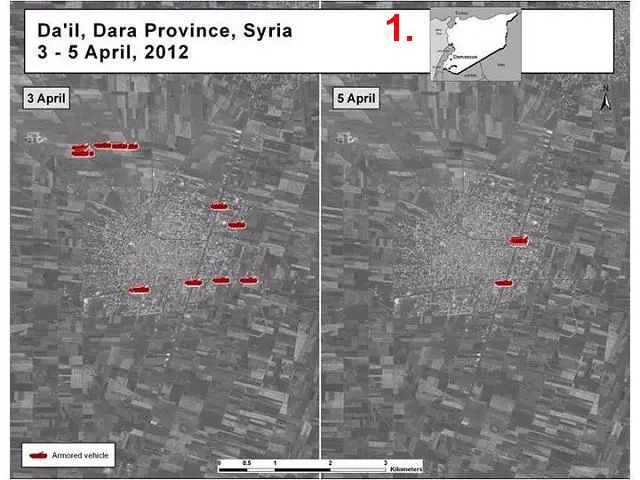 |
|||
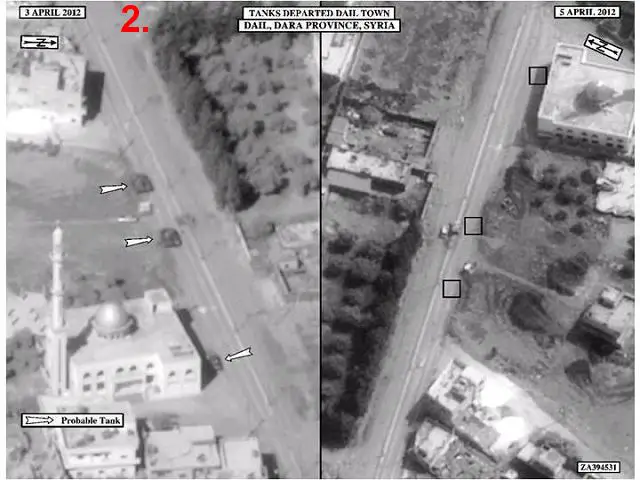 Satellite images show that there are some locales where the Syrian government did remove some forces, such as Da’el (image 1 and 2) in Daraa province and Taftanaz in Idlib, following several days of assaults against the towns. |
|||
| The
United States released satellite images on Friday, April 6, 2012, that
it said showed Syria has artillery poised to hit residential areas and
has moved some forces from one town to another despite calls for a withdrawal. |
|||
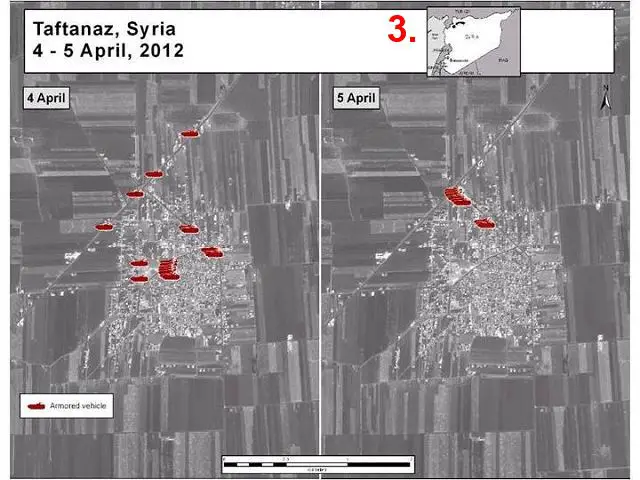 |
|||
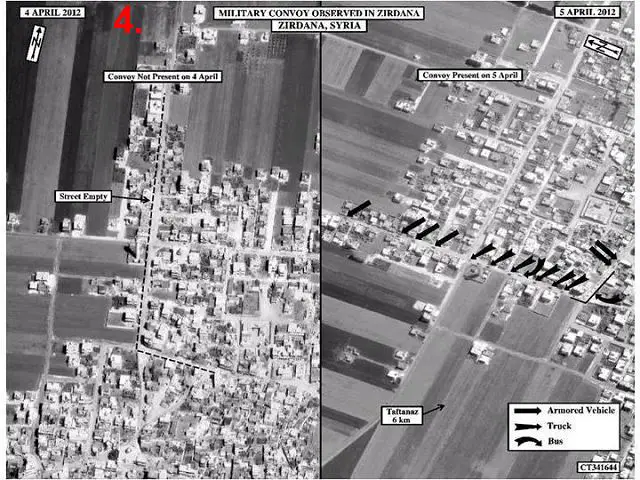 In the case of Taftanaz (graphic 3), the Syrian government simply moved some armored vehicles out of Taftanaz to the nearby town of Zirdana (graphic 4). |
|||
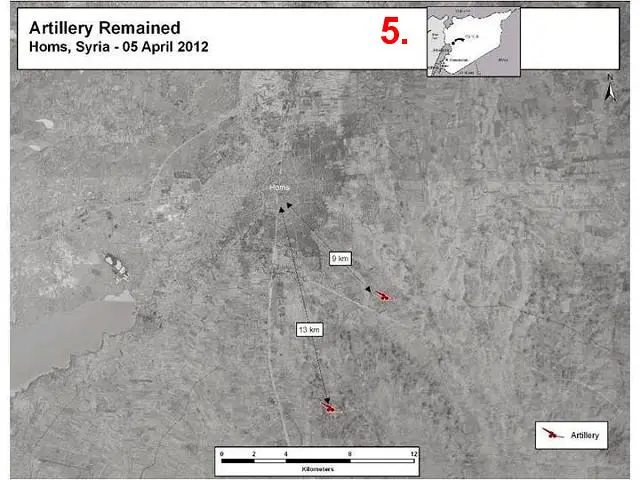 |
|||
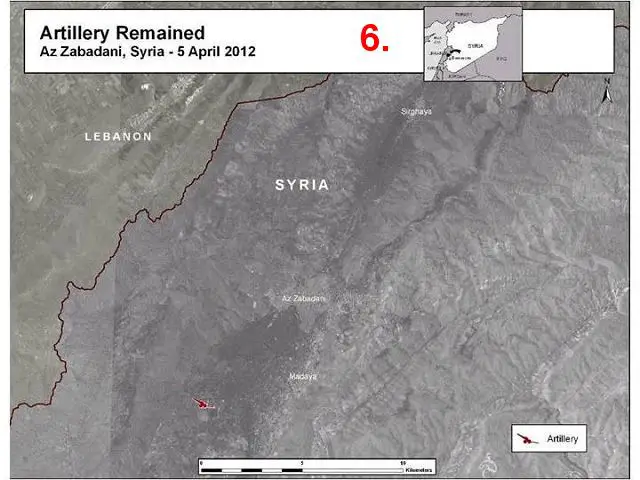 In some other places, such as Homs (graphic 5) and Zabadani (graphic 6), the Syrian government kept artillery units near residential areas where they could again fire upon them. |
|||
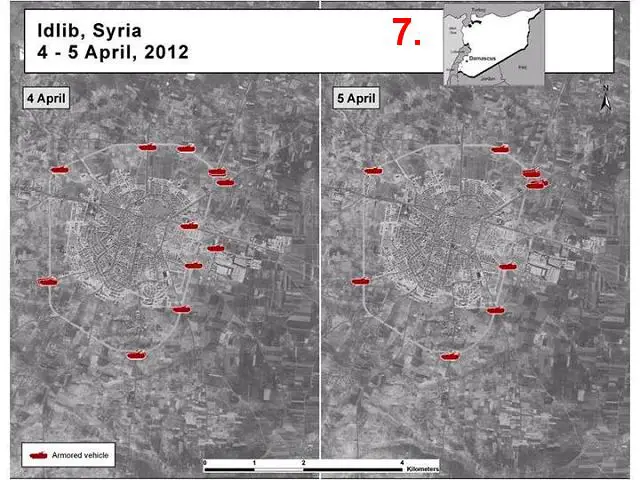 |
|||
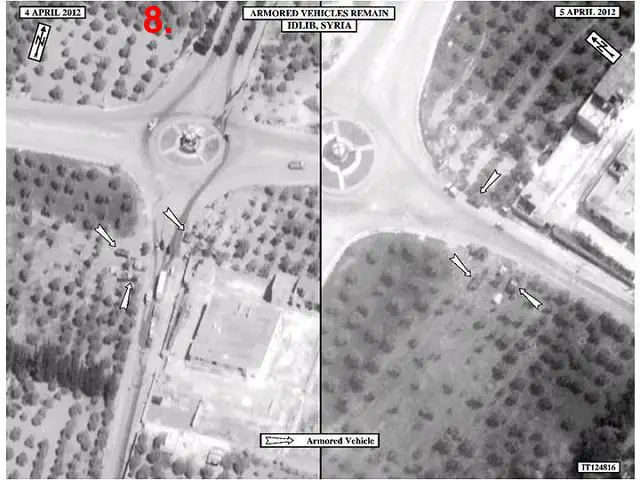 |
|||
According
to media reports and Syrian activists, on April 5 and April 6 Syrian forces
used artillery against residential areas in Zabadani and Homs and Aazaz
in Idlib (graphics 7 and 8), and there were arrest sweeps in other locations,
including suburbs of Damascus. And we understand there has been a big increase in the numbers of Syrians seeking refuge in Turkey because of military operations in their neighborhoods. This is not the reduction in offensive Syrian government security operations that all agree must be the first step for the Annan initiative to succeed. |
|||
New satellite images released by United States show Syrian armed forces continue the fight 0704122
- Posted On














